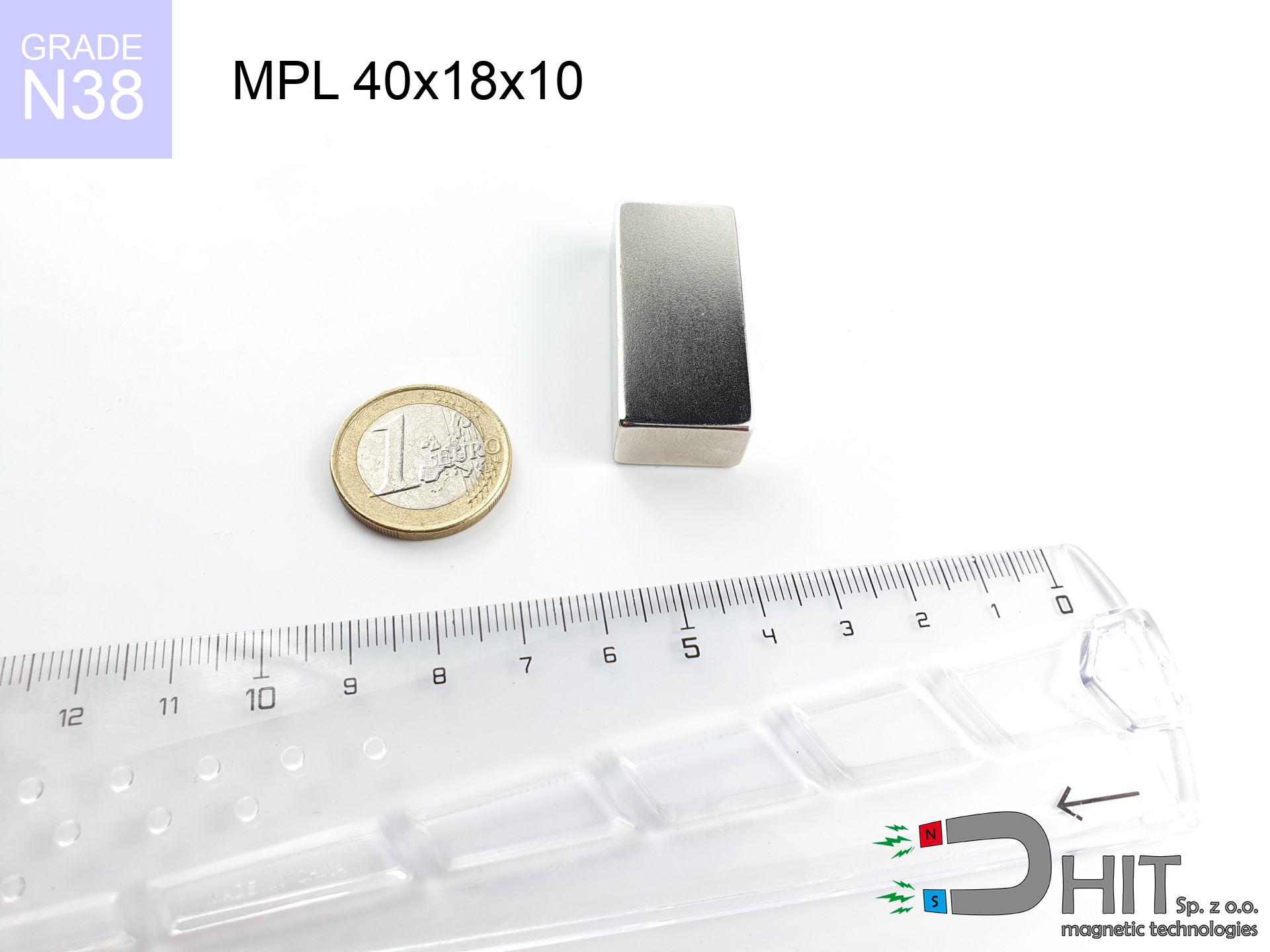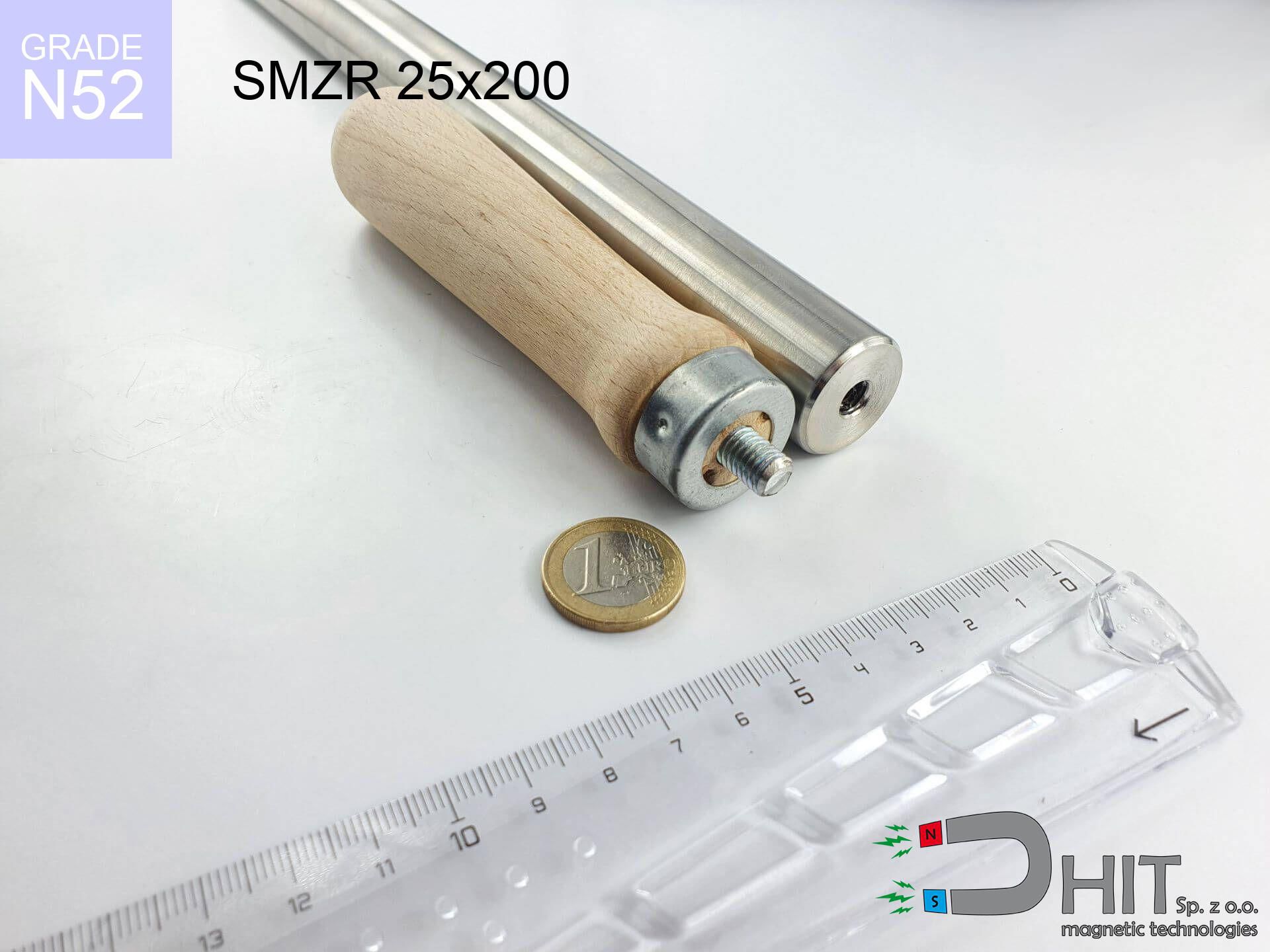UMGB 107x40 [M8+M10] GW F400 +Lina GOBLIN / N38 - goblin magnetic holder
goblin magnetic holder
Catalog no 350438
GTIN/EAN: 5906301814801
Diameter Ø
107 mm [±1 mm]
Height
40 mm [±1 mm]
Weight
2350 g
Magnetization Direction
↑ axial
Load capacity
480.00 kg / 4707.19 N
Coating
[NiCuNi] Nickel
435.24 ZŁ with VAT / pcs + price for transport
353.85 ZŁ net + 23% VAT / pcs
bulk discounts:
Need more?
Give us a call
+48 888 99 98 98
or drop us a message by means of
request form
the contact page.
Lifting power as well as appearance of a magnet can be reviewed on our
modular calculator.
Order by 14:00 and we’ll ship today!
Detailed specification - UMGB 107x40 [M8+M10] GW F400 +Lina GOBLIN / N38 - goblin magnetic holder
Specification / characteristics - UMGB 107x40 [M8+M10] GW F400 +Lina GOBLIN / N38 - goblin magnetic holder
| properties | values |
|---|---|
| Cat. no. | 350438 |
| GTIN/EAN | 5906301814801 |
| Production/Distribution | Dhit sp. z o.o. |
| Country of origin | Poland / China / Germany |
| Customs code | 85059029 |
| Diameter Ø | 107 mm [±1 mm] |
| Height | 40 mm [±1 mm] |
| Weight | 2350 g |
| Magnetization Direction | ↑ axial |
| Load capacity ~ ? | 480.00 kg / 4707.19 N |
| Coating | [NiCuNi] Nickel |
| Manufacturing Tolerance | ±1 mm |
Magnetic properties of material N38
| properties | values | units |
|---|---|---|
| remenance Br [min. - max.] ? | 12.2-12.6 | kGs |
| remenance Br [min. - max.] ? | 1220-1260 | mT |
| coercivity bHc ? | 10.8-11.5 | kOe |
| coercivity bHc ? | 860-915 | kA/m |
| actual internal force iHc | ≥ 12 | kOe |
| actual internal force iHc | ≥ 955 | kA/m |
| energy density [min. - max.] ? | 36-38 | BH max MGOe |
| energy density [min. - max.] ? | 287-303 | BH max KJ/m |
| max. temperature ? | ≤ 80 | °C |
Physical properties of sintered neodymium magnets Nd2Fe14B at 20°C
| properties | values | units |
|---|---|---|
| Vickers hardness | ≥550 | Hv |
| Density | ≥7.4 | g/cm3 |
| Curie Temperature TC | 312 - 380 | °C |
| Curie Temperature TF | 593 - 716 | °F |
| Specific resistance | 150 | μΩ⋅cm |
| Bending strength | 250 | MPa |
| Compressive strength | 1000~1100 | MPa |
| Thermal expansion parallel (∥) to orientation (M) | (3-4) x 10-6 | °C-1 |
| Thermal expansion perpendicular (⊥) to orientation (M) | -(1-3) x 10-6 | °C-1 |
| Young's modulus | 1.7 x 104 | kg/mm² |
Material specification
| iron (Fe) | 64% – 68% |
| neodymium (Nd) | 29% – 32% |
| boron (B) | 1.1% – 1.2% |
| dysprosium (Dy) | 0.5% – 2.0% |
| coating (Ni-Cu-Ni) | < 0.05% |
Environmental data
| recyclability (EoL) | 100% |
| recycled raw materials | ~10% (pre-cons) |
| carbon footprint | low / zredukowany |
| waste code (EWC) | 16 02 16 |
Other products
Pros as well as cons of neodymium magnets.
Benefits
- They do not lose magnetism, even after around ten years – the reduction in power is only ~1% (according to tests),
- They are extremely resistant to demagnetization induced by external disturbances,
- Thanks to the shiny finish, the layer of Ni-Cu-Ni, gold, or silver-plated gives an visually attractive appearance,
- Magnetic induction on the surface of the magnet is exceptional,
- Due to their durability and thermal resistance, neodymium magnets are capable of operate (depending on the form) even at high temperatures reaching 230°C or more...
- In view of the possibility of flexible forming and customization to unique solutions, neodymium magnets can be produced in a broad palette of geometric configurations, which amplifies use scope,
- Huge importance in electronics industry – they are commonly used in data components, electric motors, medical equipment, and multitasking production systems.
- Compactness – despite small sizes they provide effective action, making them ideal for precision applications
Limitations
- To avoid cracks upon strong impacts, we recommend using special steel holders. Such a solution protects the magnet and simultaneously increases its durability.
- Neodymium magnets demagnetize when exposed to high temperatures. After reaching 80°C, many of them experience permanent weakening of power (a factor is the shape and dimensions of the magnet). We offer magnets specially adapted to work at temperatures up to 230°C marked [AH], which are extremely resistant to heat
- Due to the susceptibility of magnets to corrosion in a humid environment, we advise using waterproof magnets made of rubber, plastic or other material stable to moisture, in case of application outdoors
- Due to limitations in producing threads and complex forms in magnets, we propose using a housing - magnetic mount.
- Potential hazard related to microscopic parts of magnets are risky, in case of ingestion, which gains importance in the aspect of protecting the youngest. It is also worth noting that small elements of these devices can disrupt the diagnostic process medical in case of swallowing.
- Higher cost of purchase is a significant factor to consider compared to ceramic magnets, especially in budget applications
Pull force analysis
Maximum holding power of the magnet – what it depends on?
- with the use of a sheet made of special test steel, guaranteeing full magnetic saturation
- possessing a massiveness of minimum 10 mm to avoid saturation
- with a surface perfectly flat
- with total lack of distance (without coatings)
- for force applied at a right angle (in the magnet axis)
- at ambient temperature approx. 20 degrees Celsius
Lifting capacity in practice – influencing factors
- Air gap (between the magnet and the plate), because even a very small clearance (e.g. 0.5 mm) can cause a decrease in force by up to 50% (this also applies to paint, rust or debris).
- Pull-off angle – note that the magnet has greatest strength perpendicularly. Under sliding down, the capacity drops significantly, often to levels of 20-30% of the maximum value.
- Element thickness – for full efficiency, the steel must be sufficiently thick. Thin sheet restricts the attraction force (the magnet "punches through" it).
- Material type – ideal substrate is pure iron steel. Hardened steels may have worse magnetic properties.
- Surface condition – ground elements ensure maximum contact, which increases force. Rough surfaces weaken the grip.
- Thermal environment – heating the magnet results in weakening of force. It is worth remembering the thermal limit for a given model.
Holding force was checked on a smooth steel plate of 20 mm thickness, when the force acted perpendicularly, in contrast under shearing force the holding force is lower. In addition, even a slight gap between the magnet’s surface and the plate decreases the lifting capacity.
H&S for magnets
Flammability
Powder generated during grinding of magnets is self-igniting. Avoid drilling into magnets without proper cooling and knowledge.
Risk of cracking
Protect your eyes. Magnets can fracture upon uncontrolled impact, ejecting sharp fragments into the air. Wear goggles.
Conscious usage
Handle with care. Neodymium magnets attract from a distance and snap with massive power, often faster than you can move away.
Physical harm
Big blocks can crush fingers instantly. Do not place your hand between two strong magnets.
Phone sensors
Be aware: rare earth magnets produce a field that disrupts sensitive sensors. Maintain a safe distance from your phone, tablet, and navigation systems.
Do not overheat magnets
Standard neodymium magnets (N-type) undergo demagnetization when the temperature exceeds 80°C. Damage is permanent.
Magnetic media
Data protection: Neodymium magnets can damage data carriers and sensitive devices (heart implants, hearing aids, mechanical watches).
Warning for heart patients
For implant holders: Strong magnetic fields disrupt medical devices. Keep minimum 30 cm distance or ask another person to handle the magnets.
Danger to the youngest
Adult use only. Tiny parts pose a choking risk, causing serious injuries. Keep away from children and animals.
Skin irritation risks
Certain individuals suffer from a hypersensitivity to nickel, which is the typical protective layer for NdFeB magnets. Prolonged contact may cause an allergic reaction. It is best to use safety gloves.

![Goblin holder UMGB 107x40 [M8+M10] GW F400 +Lina GOBLIN / N38 Goblin holder UMGB 107x40 [M8+M10] GW F400 +Lina GOBLIN / N38](https://cdn3.dhit.pl/graphics/banners/magnet.webp)
![UMGB 107x40 [M8+M10] GW F400 +Lina GOBLIN / N38 - goblin magnetic holder](https://cdn3.dhit.pl/graphics/products/umgb-107x40-m8+m10-gw-f400-+lina-goblin-cek.jpg)

![UMGGZ 22x6 [M4] GZ / N38 - rubber magnetic holder external thread UMGGZ 22x6 [M4] GZ / N38 - rubber magnetic holder external thread](https://cdn3.dhit.pl/graphics/products/umg-22x6-m4-gz-hiw.jpg)



